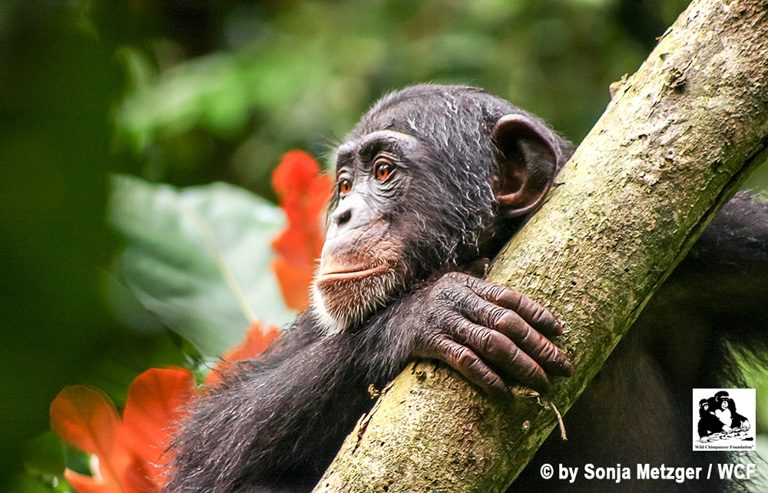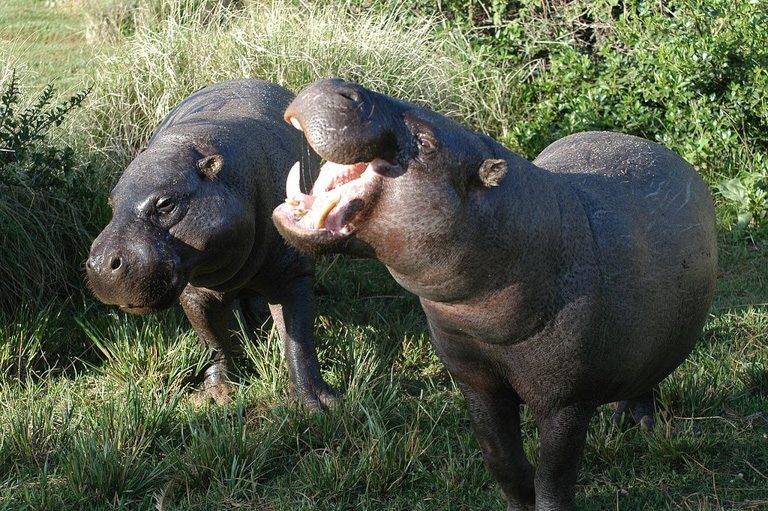The establishment of Grebo-Krahn National Park in southeastern Liberia was approved by the country’s legislature in August 2017.The 961-square-kilometer (371-square-mile) park is home to an estimated 300 western chimpanzees.There are about 35,000 Critically Endangered western chimpanzees (Pan troglodytes verus) left in the wild, and Liberia is home to 7,000 of them.
The Liberian government designated a new national park in August 2017 that will protect an important population of Critically Endangered western chimpanzee (Pan troglodytes verus), as well as several other species of large mammals.
The rainforests of the new Grebo-Krahn National Park in southeastern Liberia are home to some 300 western chimpanzees, according to the Wild Chimpanzee Foundation (WCF), based in Leipzig, Germany. A decade in the making, the 961-square-kilometer (371-square-mile) park won the approval of Liberia’s legislature on Aug. 22. Now, it only requires signatures from the president and the Minister of Foreign Affairs — formalities, WCF says — to become officially designated.
Grebo-Krahn National Park is situated in southeastern Liberia and is part of the Taï-Grebo-Sapo forest complex that extends into Côte d’Ivoire. Map courtesy of the Wild Chimpanzee Foundation
“Creating a new national park is of course very exciting — after years and years of collecting data and engaging the various stakeholders,” said Annika Hillers, a primatologist with WCF, in an email. “What bigger reward could there be?”
But those years of work that WCF, other conservation organizations, and the Liberian government have put it were just the beginning, Hillers said.
“It is now that we all have to work harder than ever, to make sure that Grebo-Krahn National Park is effectively protected and local communities are adequately involved,” she added.
Grebo-Krahn forms the “heart” of the Taï-Grebo-Sapo forest complex, extending into neighboring Côte d’Ivoire. The contiguous habitat is a critical home to not only chimpanzees, but IUCN-listed Endangered pygmy hippos (Choeropsis liberiensis), Endangered western red colobus monkeys (Piliocolobus badius), and Vulnerable forest elephants (Loxodonta cyclotis).
The path to the creation of this park began to crystallize in 2006, when the Liberian government passed a forestry reform law setting a goal of protecting 1.5 million hectares (5,792 square miles) of remaining forest areas. That included the Grebo National Forest, where the new national park is situated. Liberia had just emerged from a bloody 14-year civil war, and conservation groups like Conservation International and WCF were eager to help the Forest Development Authority, a government agency, protect the portion of standing Upper Guinean rainforest in Liberia.
A plan emerged to section off what would become Grebo-Krahn National Park, but progress toward its official designation was slow. The growth of Liberia’s economy has been hamstrung by widespread poverty, low levels of education and few employment opportunities. And the devastation of the 2014 Ebola crisis, which killed nearly 5,000 Liberians, didn’t help.
The country also lacks the infrastructure found that has helped make East Africa a global destination for wildlife-seeking tourists.
“Even though the Upper Guinea Forest Ecosystem and its biodiversity are absolutely unique in the world, much more needs to happen before activities, such as ecotourism or also research activities, could generally provide reliable income for local communities,” Hillers said. “It is very tricky to find the right balance between effective nature conservation activities and support for local communities.”
 A western chimpanzee (Pan troglodytes verus). Photo ©Sonja Metzger / WCF courtesy of the Wild Chimpanzee Foundation
A western chimpanzee (Pan troglodytes verus). Photo ©Sonja Metzger / WCF courtesy of the Wild Chimpanzee Foundation
In part, that’s because many Liberians still depend on the forest. Bushmeat remains an important source of protein, which poses a threat to the mammals that inhabit the forests that now include Grebo-Krahn National Park. Illegal gold mining and the harvest of a tree from the genus Garcinia to make marketable “chewing sticks” within the park’s borders endanger its ecosystem. And a scarcity of agricultural land means that families are clearing areas of forest close to the park so they can feed their families.
WCF says that the government doesn’t have the resources to pay enough guards to adequately protect the park. So the organization, in cooperation with the government, is working with local communities to galvanize their support, as they did in the years leading up to the park’s designation. Biomonitoring groups comprising community members help to catalog the life in the forest, and livelihood projects give community members alternatives, such as chicken or fish farming, to bushmeat hunting. Local participants in an “eco-guard” program work with law enforcement to protect the park’s wildlife, and they also engage with people in their communities, helping to explain the purpose of the park as a sanctuary for these animals.
“Without the support and active involvement of local communities, no conservation project will be successful and especially sustainable in West Africa,” Hillers said.
 Endangered pygmy hippos (pictured here) also inhabit the Grebo-Krahn National Park. Photo by Chuckupd (Public domain), via Wikimedia Commons
Endangered pygmy hippos (pictured here) also inhabit the Grebo-Krahn National Park. Photo by Chuckupd (Public domain), via Wikimedia Commons
That community support will be especially important, as the vision to protect rainforests in West Africa extends far beyond Grebo-Krahn National Park.
“We hope that this park will be part of a chain of existing and future protected areas stretching from Ivory Coast to Guinea covering huge parts of chimpanzee habitat,” said Mathias Rittgerott of the Germany-based NGO Rainforest Rescue in an email. “Without these protected areas, western chimpanzees will be at the brink of extinction soon.”
Rainforest Rescue was among the organizations that backed the Grebo-Krahn National Park initiative financially. Scientists estimate that 35,000 chimpanzees of the western subspecies still live in West Africa, with 7,000 of them in Liberia.
“Studies show that most known chimpanzee populations live outside of protected areas — meaning without any protection,” Rittgerott said. “That’s why additional parks are crucial.”
Banner image of Sonja Metzger / WCF courtesy of the Wild Chimpanzee Foundation
FEEDBACK: Use this form to send a message to the author of this post. If you want to post a public comment, you can do that at the bottom of the page.
Follow John Cannon on Twitter: @johnccannon
Agriculture, Animals, Apes, Biodiversity, Bushmeat, Charismatic Animals, Chimpanzees, Conservation, Critically Endangered Species, Deforestation, Elephants, Endangered Species, Environment, Environmental Politics, Extinction, Forest Elephants, Forests, Great Apes, Happy-upbeat Environmental, Hippos, Hunting, Land Reform, Law Enforcement, Mammals, Megafauna, Monkeys, National Parks, Parks, Primates, Protected Areas, Rainforest Animals, Rainforest People, Rainforests, Saving Rainforests, Saving Species From Extinction, Threats To Rainforests, Trees, Tropical Forests, Wildlife, Wildlife Conservation
Africa, Liberia, West Africa
Source link : https://news.mongabay.com/2017/09/liberian-park-protects-critically-endangered-western-chimpanzees/
Author :
Publish date : 2017-09-22 07:00:00
Copyright for syndicated content belongs to the linked Source.





